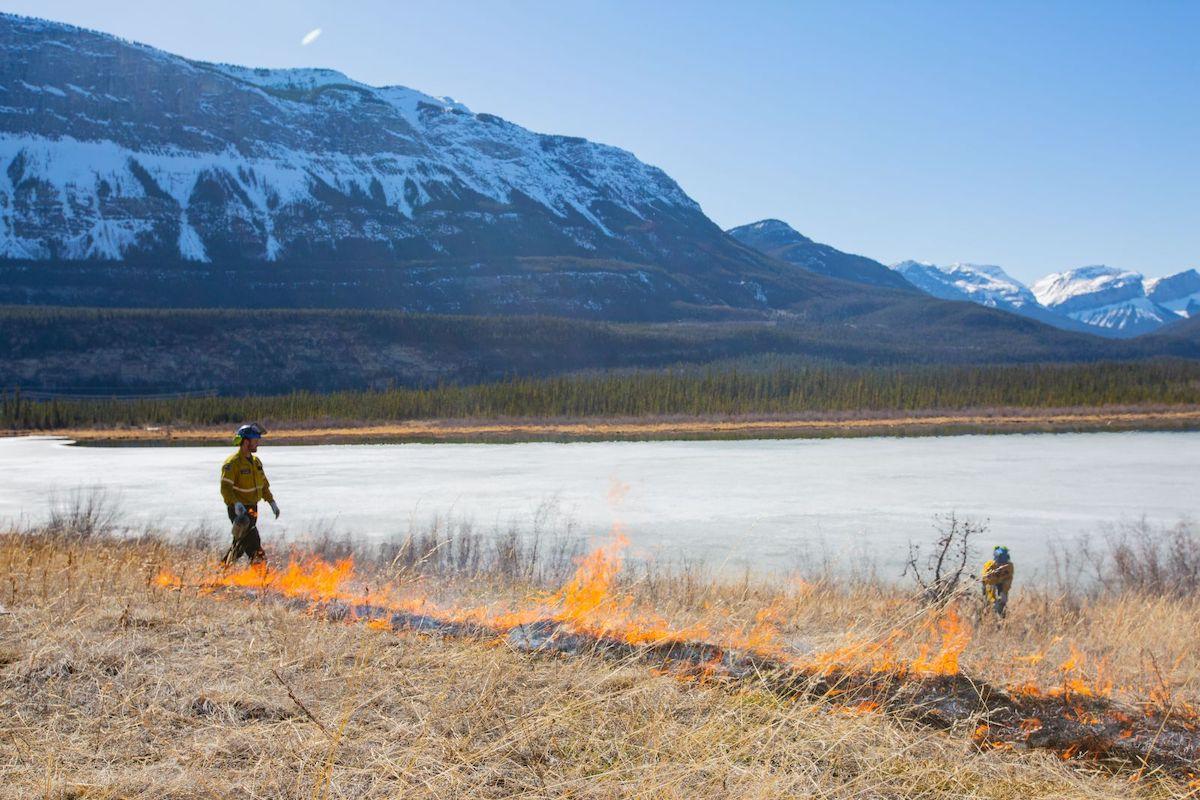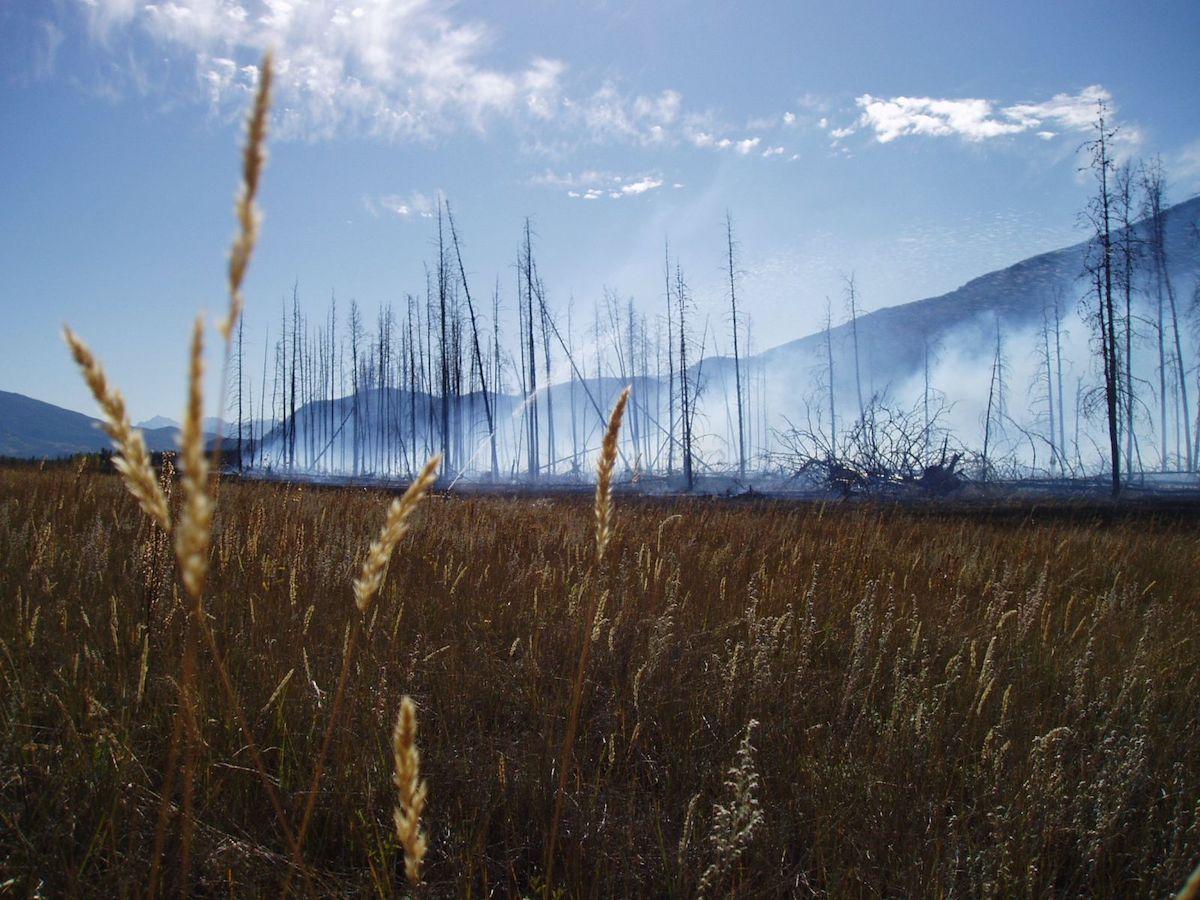
This 2021 file photo shows Parks Canada conducting a prescribed fire in Jasper National Park.
Parks Canada is planning two prescribed fires in Jasper National Park this year at Douglas-fir Hillsides and the Southesk.
The Douglas-fir Hillsides prescribed fire is composed of seven sub-units located west of Jasper townsite, in the Pyramid Bench area. These fire units are close to the Alberta town, the nearest one being on the border of the northwest edge of the townsite, leading to Pyramid Bench.
This spring, if conditions are right, Parks Canada plans to burn one sub-unit located about one kilometre (half a mile) northwest of town, along Mina Lake.
The goal is to restore the Douglas-fir forest and to enhance the landscape-level fireguard around town. “This burn will build on the success of mechanical thinning in the area and will further protect Jasper townsite from wildfires,” Parks Canada said in a news release.
The Southesk prescribed fire includes about 925 hectares (2,285 acres) in the southeast corner of the park, upstream of a 2006 wildfire in the valley.
The ecological objective is to promote the natural regeneration of the lodgepole pine forest. Lodgepole pine is a fire-dependent species which requires periodic fire to remain healthy and become resilient to future pine beetle infestation. The Southesk Valley contains a mature pine forest largely unaffected by mountain pine beetle.

One of the goals of prescribed fires is grassland restoration/Parks Canada
Prescribed fires reduce the wildfire risk to communities, help restore forest and grassland ecosystems, and enhance wildlife habitat.
Spring (March to June) and fall (mid-August to November) are typically the best seasons for prescribed fires.
Fire prescriptions are very detailed lists of the conditions that must be met before burning, such as required temperatures, wind speed and direction, relative humidity, and fuel conditions. During spring and fall, when the fire danger is usually lower than in the summertime, required conditions can often be met.
Parks Canada fire specialists try to limit smoke during prescribed fire operations. Prescribed fires will only be carried out if weather, wind, and venting conditions allow smoke to disperse into the atmosphere.


